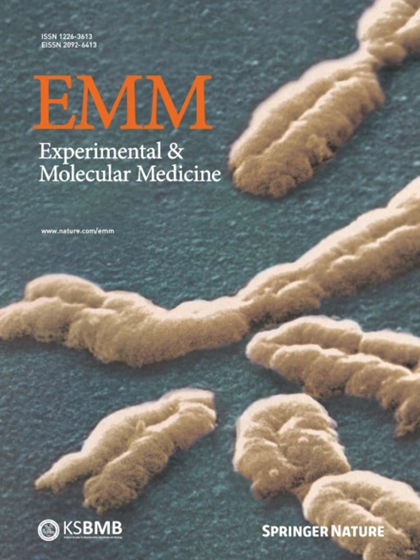膜与生物分子凝聚物在调节膜相关细胞过程中的相互作用。
IF 9.5
2区 医学
Q1 BIOCHEMISTRY & MOLECULAR BIOLOGY
引用次数: 0
摘要
液-液相分离(LLPS)已成为一种独立于膜的组织细胞空间的关键机制。通过液-液相分离组装起来的生物分子凝聚物表现出独特的液滴状行为,并能与周围环境交换成分。凝结相的调控,包括从液态到凝胶或不可逆聚集体的转变,对于它们的生理功能和控制病理进展(如在神经退行性疾病和癌症中观察到的情况)非常重要。虽然早期对生物分子凝聚物的研究主要集中在细胞质等流体环境中的生物分子凝聚物,但最近的发现揭示了它们在膜附近、膜上甚至膜内的存在。本综述旨在概述细胞环境中膜相关凝聚物的特性及其与膜相关的生物功能。本文章由计算机程序翻译,如有差异,请以英文原文为准。

Interplay between membranes and biomolecular condensates in the regulation of membrane-associated cellular processes
Liquid‒liquid phase separation (LLPS) has emerged as a key mechanism for organizing cellular spaces independent of membranes. Biomolecular condensates, which assemble through LLPS, exhibit distinctive liquid droplet-like behavior and can exchange constituents with their surroundings. The regulation of condensate phases, including transitions from a liquid state to gel or irreversible aggregates, is important for their physiological functions and for controlling pathological progression, as observed in neurodegenerative diseases and cancer. While early studies on biomolecular condensates focused primarily on those in fluidic environments such as the cytosol, recent discoveries have revealed their existence in close proximity to, on, or even comprising membranes. The aim of this review is to provide an overview of the properties of membrane-associated condensates in a cellular context and their biological functions in relation to membranes. Understanding how cells organize and compartmentalize their interiors is key to understanding how they function and respond to changes. This study analyzes data from past research to explore the roles of membrane-associated biomolecular condensates in cellular processes such as signaling, membrane dynamics, and the formation of specialized cellular domains. Researchers demonstrate how these condensates, formed through a process called liquid–liquid phase separation, selectively gather specific molecules while excluding others, thus regulating various cellular functions. The study also investigates how these condensates influence membrane shape, contribute to contact between different organelles, and control the movement of molecules within the cell. Researchers conclude that a deeper understanding of these condensates offers new insights into cell biology and may lead to new treatment strategies for diseases in which condensate function is disrupted. This summary was initially drafted using artificial intelligence, then revised and fact-checked by the author.
求助全文
通过发布文献求助,成功后即可免费获取论文全文。
去求助
来源期刊

Experimental and Molecular Medicine
医学-生化与分子生物学
CiteScore
19.50
自引率
0.80%
发文量
166
审稿时长
3 months
期刊介绍:
Experimental & Molecular Medicine (EMM) stands as Korea's pioneering biochemistry journal, established in 1964 and rejuvenated in 1996 as an Open Access, fully peer-reviewed international journal. Dedicated to advancing translational research and showcasing recent breakthroughs in the biomedical realm, EMM invites submissions encompassing genetic, molecular, and cellular studies of human physiology and diseases. Emphasizing the correlation between experimental and translational research and enhanced clinical benefits, the journal actively encourages contributions employing specific molecular tools. Welcoming studies that bridge basic discoveries with clinical relevance, alongside articles demonstrating clear in vivo significance and novelty, Experimental & Molecular Medicine proudly serves as an open-access, online-only repository of cutting-edge medical research.
 求助内容:
求助内容: 应助结果提醒方式:
应助结果提醒方式:


